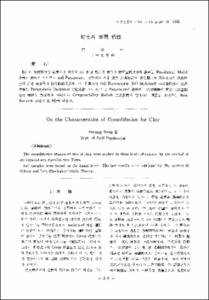Salinger의 Nine Stories와 The Catcher in the Rye에 나타난 Zen Buddhism의 영향
- Alternative Title
- Zen Buddhism in Salinger's Nine Stories and The Catcher in the Rye
- Abstract
- The Glass saga에서 명백히 나타나듯이, Salinger는 그의 작품활동에서 Zen Buddhism의 영향을 많이 받았으나, Nine Stories와 The Catcher in the Rye에서는 그것이 표면화되지 않고 있다. 그러나 자세히 살펴보면 이 작품들의 주인공은 公案 수련자와 동일한 심리적, 정신적 변화과정을 겪고 있다. 즉 모순 도는 부정에서 시작하여, 혼동과 좌절을 경험하다 막다른 골목에서 논리를 초월한 climactic epiphany를 통해 현실을 초극 또는 긍정한다는 것이다. 그러나 이 epiphany는 일상적인 사소한 개인적 경험이라는데서, 전통적인 소설기법에 그 뿌리를 두고 있다. 이 두 작품이 소설로써 성공한 것은 어디까지나 현실을 굳건히 딛고, 전통적인 소설기법에 충실하면서, 동시에 불교적인 구조를 적절히 가마시킨 때문이다. 그러나 The Glass Saga에서는 종교적인 목적의식이 지나치게 노출되어 전통적인 소설기법과 균형을 이루지 못하고 있으며, epiphany 또한 종교적, 신비적 체험으로 변질되어 있다. 이 불균형과 변질이 소설가로써의 Salinger의 쇠퇴를 가져오게 한 가장 중요한 요인이 아닌가 한다.
Anyone who reads Salinger's works, especially his later works, so-called 'the Glass saga novels', will easily find many elements of Zen Buddhism in them. some of them can actually be called fictional essays on religious practice rater than novels. In Nine Stories and The Catcher in the Rye, although Buddhistic influence is not apparent, the character development is very similar to the psychological process of a Zen disciple who is asked to meditate on a Zen koan given by his master. Most of the heroes in the two books are unhappy in the beginning because of the phoniness of the people they meet or the absurdities of the situations they are in. Their negative of hostile feelings are deepened into extreme isolation and bafflement, as the stories go on, until at last they are led to climatic epiphanies. But the presentation of these epiphanies is not influenced by Zen, but traditional, because they are, unlike beatitude or satori in Rinjai School, sudden and personal experiences of the ordinary people gained by trivial and irrevelent objects of gestures or words in their ordinary lives. So I should say that the success of the two books as short stories and a novel lies in their well-mixed structures of the Buddhistic elements and traditional ones on the realistic grounds.
Anyone who reads Salinger's works, especially his later works, so-called 'the Glass saga novels', will easily find many elements of Zen Buddhism in them. some of them can actually be called fictional essays on religious practice rater than novels. In Nine Stories and The Catcher in the Rye, although Buddhistic influence is not apparent, the character development is very similar to the psychological process of a Zen disciple who is asked to meditate on a Zen koan given by his master. Most of the heroes in the two books are unhappy in the beginning because of the phoniness of the people they meet or the absurdities of the situations they are in. Their negative of hostile feelings are deepened into extreme isolation and bafflement, as the stories go on, until at last they are led to climatic epiphanies. But the presentation of these epiphanies is not influenced by Zen, but traditional, because they are, unlike beatitude or satori in Rinjai School, sudden and personal experiences of the ordinary people gained by trivial and irrevelent objects of gestures or words in their ordinary lives. So I should say that the success of the two books as short stories and a novel lies in their well-mixed structures of the Buddhistic elements and traditional ones on the realistic grounds.
- Issued Date
- 1983
- Type
- Research Laboratory
- Alternative Author(s)
- Bae, Jong-Un
- Publisher
- 연구논문집
- Language
- kor
- Rights
- 울산대학교 저작물은 저작권에 의해 보호받습니다.
- Citation Volume
- 14
- Citation Number
- 1
- Citation Start Page
- 193
- Citation End Page
- 204
- Appears in Collections:
- Research Laboratory > University of Ulsan Report
- 파일 목록
-
-
Download
 000002024729.pdf
기타 데이터 / 301.79 kB / Adobe PDF
000002024729.pdf
기타 데이터 / 301.79 kB / Adobe PDF
-
Items in Repository are protected by copyright, with all rights reserved, unless otherwise indicated.